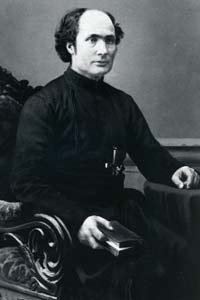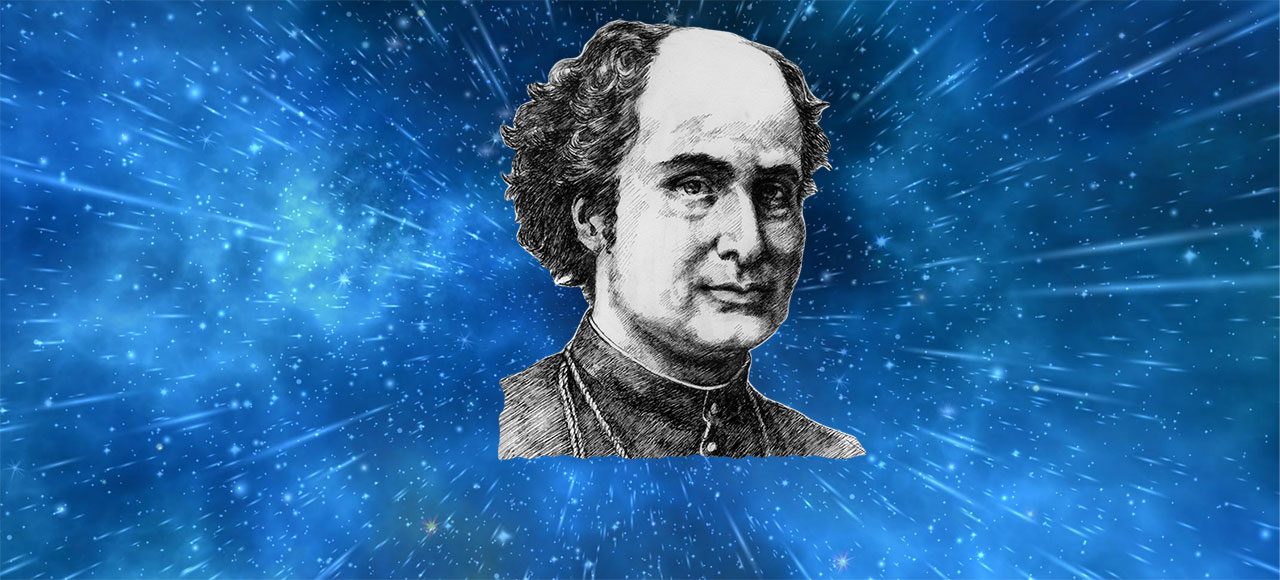Biography

Joseph Fabre OMI
Joseph Fabre was born at Cuges, in the diocese of Marseille, on November 14, 1824, to Lucie-Rosalie Pignol and Alexis-Lazare Fabre, a wool carder. Joseph was about four years old when his father died and he was ten at the death of his mother. He was confirmed by Bishop Eugene de Mazenod on January 17, 1838, at the end of a mission in Cuges preached by the Oblates. From the age of 14 to 19, he attended a secondary school in Marseille where he was excellent in his studies. He finished his bachelor’s degree with honors in philosophy. Some friends suggested that he enroll in the Naval Surgeon?s Corps. But the requisite studies soon made him sick. After a retreat with the Jesuits, he entered the major seminary of Marseille on October 18, 1842. During his first two years of theology, he decided to become an Oblate. He received the habit from the hands of Bishop de Mazenod at the seminary in Marseille on February 16, 1844. He spent his novitiate year at Notre Dame de l?Osier where he made his first vows on February 17, 1845. After his ordination to the priesthood by Bishop de Mazenod on May 29, 1847, he stayed at the major seminary of Marseille until 1861 as a professor, rector of the major seminary, and honorary vicar general from 1854 until 1861. At the same time, he was chaplain to the Sisters of St. Charles, General Bursar, and bursar of the Midi Province after July 2, 1851. After the death of Bishop de Mazenod on May 21, 1861, on May 25, Father Tempier convened a General Chapter for December 5 at Montolivet. Because of the reaction against the late bishop in Marseille, the Chapter took place at the Oblate house in Paris. Father Tempier begged the Chapter members not to think of him for the role of Superior General. Archbishop Guibert of Tours asked them not to choose a bishop. Father Fabre was elected on the first ballot by 19 of 20 votes.
He was only 36 years old when he succeeded Bishop de Mazenod in the double role of Superior General of the Oblates and Director General of the Holy Family Sisters of Bordeaux. But for 17 years, he had been working alongside the Founder and Father Tempier, who always appreciated him and who passed their spirit on to him. Immediately, Fr. Fabre had to confront a painful situation in Marseille where an intense reaction against the administration of the deceased bishop had appeared. There were accusations that he had merged the material possessions of the diocese with those of the Oblates. He went to see Bishop Cruice, the new bishop of Marseille, a few times, and he established with the bishop a complete separation of the possessions of the diocese and those of the Oblates. Some also felt that the Oblates were too powerful in the diocese. Fr. Fabre agreed to cede the direction of the major seminary to the Lazarists. Then he established the General House in Paris, closed the scholasticate in Montolivet, and found a place for the scholastics at Autun.
The Oblates remained very united around their new Superior General. His biographers fittingly wrote: “After the founding, the organizing”. To organize, one needs order and a method; those were the dominating qualities of our second Superior General. A flawless memory of the past and a wise insight into the future, a quick and sure observation, an immediate intuition of the whole picture and of the smallest details, a spirit of constancy, almost to the point of the inflexible rigidity of a clock: that was Very Reverend Father Fabre. Very sensitive to the actions of others, he ever remained master of his own actions. He never got overly excited, nor did he step away.
To improve contact among the missionaries, on April 3, 1862, Fr. Fabre founded the review Missions OMI, in which were published four times a year reports and letters that had been received. In the last issue of each year, there appeared a list of oblations and deaths. He also wrote two series of circular letters, thirty-four of them (from 1862 until 1890) especially about the observance of the Rules and the religious life of the Congregation. One hundred and thirty-four of them contained information about deceased Oblates.
During his term as Superior General, several houses were opened in Europe and in America, but Fr. Fabre accepted no new mission field other than the German mission in Southwest Africa, on the condition that there would be a province established within the German Empire. The Congregation developed greatly. It grew from around 400 Oblates in 1861 to 1339 in 1892 (10 bishops, 648 priests, 201 scholastics, 91 scholastic novices, 352 Brothers and 37 Brother novices). On December 5, 1886, there was a celebration of his 25 years as Superior General, but his strength was fading. His health had always been fragile. He was anemic. In July of 1892, while he was resting at Royaumont, gangrene appeared in one foot. He faded rapidly, receiving Extreme Unction on September 20 and dying on October 26. He is buried in the Oblate crypt at the cemetery of Montmartre.
